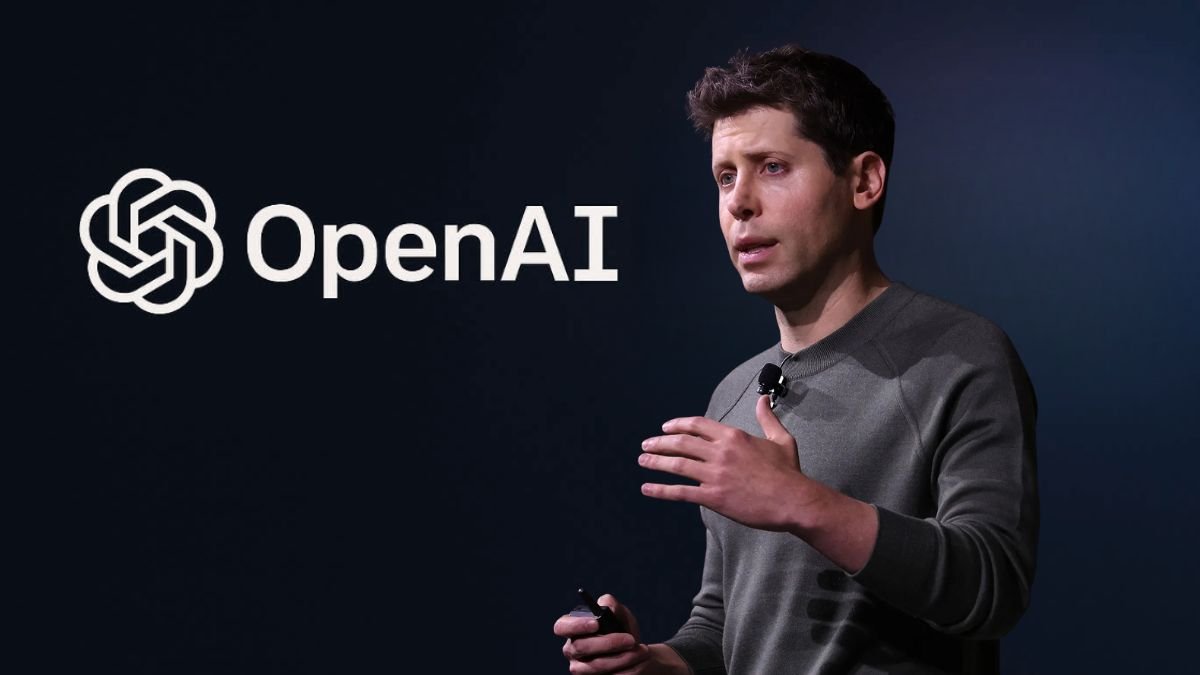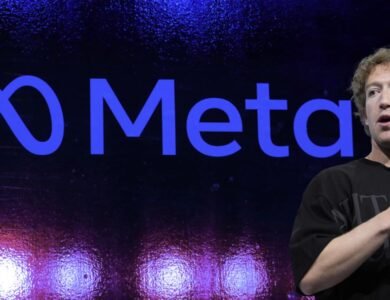
OpenAI has made a big change. They are bringing back GPT-4o for Plus users. This is after many users spoke out against the new GPT-5.
OpenAI CEO Sam Altman says they listen to what users say. They are changing their plans because of this. Bringing back GPT-4o shows how much they value what users want.
This move makes people wonder about OpenAI’s future plans. Will ChatGPT stay the same? How will their products change to meet user needs? OpenAI’s response to feedback will shape their future.
The Sudden Reinstatement of GPT-4o
OpenAI CEO Sam Altman announced the return of GPT-4o on X. He said Plus users could now choose GPT-4o again. This change happened after many users were unhappy with GPT-4o’s removal, mainly because of the GPT-5 rollout.
Timeline of the Reversal Decision
The timeline of OpenAI’s decision to bring back GPT-4o is important. It shows how the company listened to user feedback.
Key Dates and Announcements
- The initial removal of GPT-4o was announced on [Date].
- User feedback started to show, with many unhappy about the removal.
- OpenAI CEO Sam Altman announced the return on X on [Date].
Communication Channels Used
OpenAI used X (formerly Twitter) to tell users about the return. This choice was likely because of X’s fast updates and wide reach.
Details of the Restored Access
The return of GPT-4o brought back important features users missed.
Which Features Returned
Key Features:
- Advanced language processing capabilities.
- Enhanced user interface elements.
- Improved response accuracy.
Implementation Timeline
The return of GPT-4o was done in stages, with Plus users first. This way, OpenAI could quickly fix any problems.
Understanding the Initial GPT-4o Removal
The sudden removal of GPT-4o from OpenAI’s offerings left many users perplexed. This section delves into the reasons behind this decision and its immediate aftermath.
The Original Access Restriction
Users discovered the removal of GPT-4o when they logged into ChatGPT and found that GPT-5 was the default model. This change was not explicitly communicated, leading to confusion.
How Users Discovered the Change
Many users reported noticing the change when they attempted to access GPT-4o and found it unavailable. The lack of prior notification or explanation added to the surprise.
Immediate User Impact
The immediate impact was a surge in user complaints and inquiries about the removal. Users were concerned about the implications of this change, including the capabilities and limitations of GPT-5 compared to GPT-4o.
OpenAI’s Initial Justification
OpenAI provided two main justifications for removing GPT-4o: technical reasons and business strategy explanations.
Technical Reasons Provided
OpenAI cited the need to optimize resources for the development and refinement of GPT-5. They argued that maintaining both models simultaneously was resource-intensive and hindered the progress of the newer model.
Business Strategy Explanations
From a business perspective, OpenAI explained that the removal was part of a strategy to phase out older models in favor of more advanced ones. This ensured they remained competitive in the AI landscape.
The GPT-5 Rollout Strategy
OpenAI is rolling out GPT-5 with a strategic plan. It aims to use its enhanced performance and features. The wait for GPT-5 has been long, with hopes for better reasoning, faster coding, and improved writing.
Enhanced Technical Capabilities
GPT-5 has made big strides in technology. Performance improvements are a major highlight. It can now process complex tasks faster and more accurately.
Performance Improvements
GPT-5’s updates aim to make AI more efficient and effective. Users will see quicker responses and can tackle more complex questions.
New Features and Functions
GPT-5 also brings new features and functions. It offers better coding help, improved writing, and smarter reasoning.
Access and Pricing Structure
The rollout of GPT-5 includes a flexible pricing plan. Subscription tiers are available for everyone, from individuals to big companies. This way, users can pick what fits their needs best.
Subscription Tiers
OpenAI has set up different subscription levels for GPT-5. There are plans for both individuals and businesses. Each level offers specific features and access levels.
Enterprise vs. Individual Access
There’s a big difference between access for businesses and individuals. Companies get tailored solutions and support, while individuals get a simpler, more affordable option.
OpenAI Restores GPT-4o Access for Plus Users After GPT-5 Rollout Backlash
OpenAI faced a lot of backlash after the GPT-5 rollout. They decided to bring back GPT-4o for Plus users. Many users were upset because they loved GPT-4o’s abilities.
Magnitude of User Complaints
Users were very unhappy and shared their feelings in many ways. They said losing GPT-4o felt like losing a trusted friend. They also said GPT-5 was too cold and mechanical.
Volume of Support Tickets
OpenAI got a lot of support tickets. Users were upset about the loss of GPT-4o and the switch to GPT-5. They missed GPT-4o’s understanding and nuance.
Subscription Cancellation Rates
More users canceled their subscriptions. They didn’t like the changes OpenAI made. OpenAI had to act fast to keep more users.
Public Relations Crisis
The backlash turned into a big public relations crisis for OpenAI. The company’s actions were under a lot of scrutiny. Negative media and social media reactions made things worse.
Media Coverage of the Backlash
Many media outlets covered the story. They talked about user dissatisfaction and OpenAI’s challenges. The coverage was mostly critical, urging OpenAI to listen to its users.
Viral Social Media Reactions
Social media was filled with user reactions. Many were disappointed and frustrated. The hashtag #RestoreGPT4o became popular, with users asking for GPT-4o’s return.
Technical Comparison: GPT-4o vs. GPT-5
OpenAI’s choice to bring back GPT-4o has sparked a comparison with GPT-5. This comparison is key to understanding the progress and trade-offs between the two.
Performance Benchmarks
The performance benchmarks between GPT-4o and GPT-5 show big differences in their abilities.
Speed and Efficiency Metrics
GPT-5 has better speed and efficiency, handling complex queries quicker. This is thanks to its updated architecture and smarter algorithms.
Accuracy and Capability Tests
GPT-5 shows better reasoning and more accurate answers, like in coding tasks. Yet, GPT-4o remains reliable in some areas.
User Experience Differences
The user experience between GPT-4o and GPT-5 is quite different. This is mainly because of their different interfaces and features.
Interface Changes
GPT-5 has a simpler interface, making it easier for users to find and use its features. This is a big plus over GPT-4o.
Functionality Variations
GPT-5’s functionality is better with faster coding assistance and easier interactions. While GPT-4o is solid, GPT-5 offers a smoother user experience.
OpenAI’s Official Response to the Controversy
OpenAI has tackled the GPT-4o controversy in many ways. They’ve made leadership statements and changed how they talk to users. This is to calm concerns and clear up what they plan to do next.
Leadership Statements
OpenAI’s leaders have spoken up about what they’re doing. They’ve shared important statements and memos. These give insight into how they made their decisions.
CEO and Executive Comments
OpenAI CEO Sam Altman listened to what users said. He said the company didn’t realize how much users loved GPT-4o. This was a big change in how they listen to users.
Internal Memo Leaks
Leaked memos showed talks about GPT-4o’s removal.
“We are reevaluating our priorities based on user feedback,” a memo read. This move was to win back trust from users.
Revised Communication Approach
OpenAI has changed how they talk to users. They want to be more open and focus on what users need. They’re starting new ways to listen to feedback.
New Transparency Initiatives
OpenAI has started new ways to share information. They have blogs and forums for users to talk. These steps help users stay updated on what’s coming next.
User Feedback Mechanisms
The company has set up new ways for users to share their thoughts. They have surveys and direct channels.
- Regular surveys to check on user happiness
- Direct feedback channels for quick concerns
- Public forums for discussion and Q&A
These steps make sure users’ voices are heard and counted in future plans.
Business Implications for OpenAI
OpenAI’s change on GPT-4o access has big effects on its money and how it stands against others. The move to bring back GPT-4o for Plus users after backlash over GPT-5 has raised many business worries.
Financial Impact Assessment
The financial effects of this choice are complex. Two main areas to look at are:
- Subscription revenue effects
- Investor reactions
Subscription Revenue Effects
Bringing back GPT-4o might change OpenAI’s subscription money. Potential effects include changes in user retention rates and subscription cancellations. OpenAI is looking into selling more stock, which could help make up for any lost money.
Investor Reactions
Investors have mixed feelings about bringing back GPT-4o. Some see it as a good move to keep user trust. Others worry about the money side of things.
Competitive Positioning
OpenAI’s place in the market is also affected by the GPT-4o reinstatement. Important things to think about are:
- Market share considerations
- Strategic advantages and disadvantages
Market Share Considerations
OpenAI’s choice might change its market share. Bringing back GPT-4o could sway user choices and shake up the competition.
Strategic Advantages and Disadvantages
The strategic side of bringing back GPT-4o has both ups and downs. Ups could be happier users and more trust. Downs might be higher costs and more work to handle different models.
User Trust and Relationship Management
OpenAI quickly brought back GPT-4o, showing they care about user trust. This move highlights how important it is to keep users happy in their product plans.
Rebuilding Trust
To win back trust, OpenAI started several projects. These include:
New User Benefits and Incentives
OpenAI introduced new perks to make users happier. As
“The key to maintaining user trust lies in consistently delivering value and meeting user needs,”
an OpenAI spokesperson explained.
Community Engagement Initiatives
OpenAI is also working on building a community. They launched forums and feedback systems to make everyone feel included.
Long-term Relationship Strategy
OpenAI is planning for the future by focusing on keeping customers loyal. They’re working on customer loyalty programs and listening to feedback.
Customer Loyalty Programs
These programs give rewards to regular users. They offer special perks to make their experience better.
Feedback Implementation Process
OpenAI has a strong feedback system. They make sure user suggestions are used in making the product better. This makes users feel important.
By focusing on user trust and relationship management, OpenAI wants to keep users happy. They aim to build a loyal customer base.
Future of OpenAI’s Product and Release Strategy
The launch of GPT-5 has given OpenAI valuable insights. These insights will guide their future plans. The company has learned a lot from the latest model’s journey.
Lessons for Future Rollouts
OpenAI learned the need for thorough testing with GPT-5. They will likely introduce new testing protocols that are more detailed and effective.
New Testing Protocols
These new methods might include longer beta tests. They will involve more users from different backgrounds. This helps find problems before the big launch.
User Involvement in Decision-Making
OpenAI also sees the benefit of user involvement in decision-making. They might ask users for feedback more often. This will help shape future products.
Anticipated Model Release Approach
OpenAI’s future plans for releasing models will change based on GPT-5’s lessons. They will think about technology progress and what users want.
Gradual vs. Immediate Transitions
They might choose a gradual rollout approach for new models. This way, they can introduce changes slowly and carefully.
Communication Timeline Improvements
OpenAI might also work on their communication timeline. They want to tell users about upcoming updates earlier. This could build excitement and avoid negative reactions.
Conclusion: The Broader Impact of OpenAI’s Decision Reversal
OpenAI’s choice to bring back GPT-4o for Plus users shows the company’s flexibility and dedication to making users happy. This move shows how important user feedback is in guiding the company’s plans.
This decision has a big impact on OpenAI. It shows the company is open to hearing what users have to say. It also shows they can change to meet new needs. This is key in the fast-changing world of AI.
As OpenAI keeps working on its models, they will use what they learned from this change. They will need to find a balance between new ideas and keeping users happy. This balance is key to their success in the future.



